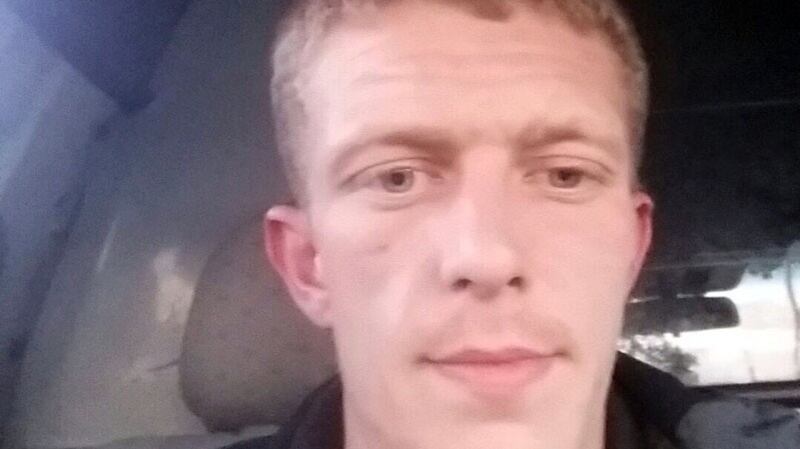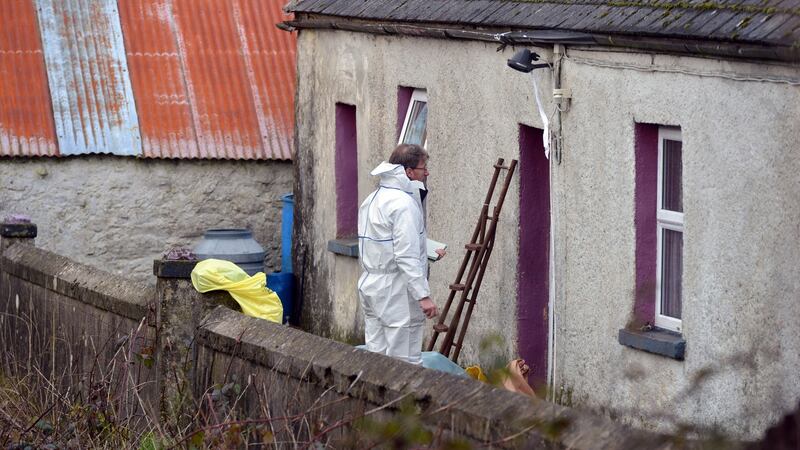Gardaí investigating the murder of Paddy Lyons put it to Ross Outram that there could only ever be one outcome when a 26-year-old man hit a 90-year-old pensioner at least 10 times with a walking stick.
A defiant Outram accepted it “was not on” to assault the frail retired farmer but insisted he only “fought back” in self-defence after Lyons, who only had the use of one arm, hit him with a walking stick and shovel at his isolated cottage.
It was a defence Outram stuck to throughout his trial.


The jury rejected his account and Outram (28), of Ferryland, Waterford Road, Clonmel in Co Tipperary, was found guilty at the Central Criminal Court on Friday of murdering Paddy Lyons (90) at his home at Loughleagh, Ballysaggart, Lismore, Co Waterford, at a time unknown between February 23rd and 26th, 2017.
Lacerations
Outram went to the cottage looking for money and when he did not get any, he inflicted at least 10 separate blows to the deceased’s head and neck with a blunt weapon. Some of the lacerations went through the layers of the scalp and extended underneath the membrane covering the skull. The victim also had a broken hip, jaw and ribs.
Outram’s trial heard he did not leave empty-handed - he stole a bag of coal from Lyons’s shed on the 30-acre holding down a remote boreen in the foothills of the Knockmealdown mountains and put it into the boot of his car before driving away.
It became apparent from witness testimonies at the trial that Lyons was reliant on the generosity of friends to look after him.
Mary Fennessey provided home help to Lyons for many years at his secluded cottage, which had electricity but no running water. She would arrive between 2pm and 3pm each day and clean the house before she brought in water from outside and chopped wood.

Fennessey said she noticed nothing out of the ordinary on the afternoon of February 24th, 2017 when she arrived at Lyons’ home. He normally kept the gate to the boreen locked and would leave a key for the padlock in a jam jar inside the hollowed centre of a nearby wall. “The way Paddy lived he trusted everyone,” said Fennessey, adding she brought him a stew for his meal that day and he was in great form.
She left Lyons’ home at about 4pm that day. One of the last things she did was boil the kettle to make him some tea before she made the short four minute trek back up the narrow country lane, locking the gate behind her.
She never saw him alive again.
She said Lyons had been very lively for his age, was a quick walker and experienced no aches or pains except for the “stiffness or fusion” of his right shoulder he suffered during childbirth. This disability meant he could only keep his arm in one position.
‘Lovely person’
Kathleen Kiely, who had sold second-hand clothes to Lyons, described him as a “lovely person”. She arrived at the cottage at about 4pm on February 25th.
She stepped inside the cottage and saw Lyons sitting in a chair facing the front door instead of opposite the fireplace which was his usual spot. “He did not move or respond when I called him,” she said.
Lyons’ body was found slumped in an armchair in the middle of his kitchen. His penis was exposed through his boxer shorts and there was a trail of urine coming from underneath the chair. There were multiple lacerations on his scalp and evidence of extensive blood loss .
Outram initially told investigating gardaí he did not know Lyons or anything about his death. He subsequently admitted he had been in his house in Ballysaggart on either February 24th or 25th.

Outram, who has convictions for theft and assault, did not have a great start in life. His parents separated when he was young and he lived with his mother and grandmother, Ann Donoghue. However, he was mostly raised by his grandmother Ann, who was very close friends with Paddy Lyons.
Outram’s grandmother had brought him to Ballysaggart as a child and photos of him with Lyons were found in the defendant’s house during the investigation.
Ann Donoghue died in 2005 when Outram was only 14. This caused Outram to go “off the rails” and marked the beginning of his descent into drug addiction.
Drink problem
The court heard Outram’s mother has a significant drink problem and the defendant claimed he was concerned Lyons was giving her money, which she was using to feed her alcohol dependency. “I figured if I went and took his money, she wouldn’t be able to get money for drink off him anymore,” he told gardaí in interviews.
It was Outram’s defence that he had taken 100 Xanax tablets when he knocked on Lyons’ door on February 24th looking for money. He confessed he had been “so out of it” that his Volkswagen Passat car had crashed through the pensioner’s gate on the night, forcing the lock. However, a pharmaceutical expert told the jury that there was “no proof” Outram had taken Xanax.
Inside the house, Lyons refused to give Outram any money and the defendant said the old man began hitting him with his walking stick and shovel. He said he fought back and struck Lyons repeatedly in self-defence before leaving.
He claimed that he had marks on his hands and lumps on his head after being attacked by the vulnerable old man and dropped his trousers during Garda interviews to show off an injury to his inner thigh.
He insisted Lyons was alive when he left the house and could not believe the old man was dead when it “came on” the news on Sunday.
Investigating gardaí later found Outram’s blood-stained hoodie with the deceased’s DNA on it in his bedroom as well Google searches surrounding Lyons’ death on his mobile phone.
Defenceless
Pathologist Dr Margaret Bolster said she found Lyons body in an armchair and his cause of death was blunt force trauma to his body with a traumatic brain injury and shock due to fractures of his hip joint, jawbone and ribs.
A defence pathologist said he “favoured” the possibility that Lyons’ hip fracture was the result of a fall rather than blows with a blunt weapon.
Defence counsel, Michael O’Higgins SC, argued Outram had acted in self defence and could not be made liable for “a fall” which saw Lyons break his hip if it was unconnected to the original injuries inflicted on him by the murderer.
However, prosecution counsel John O’Kelly SC said the defendant carried out “a vicious and sustained attack on a defenceless old man” and his claim of self-defence did “not bear thinking about”.
O’Kelly said it “flew in the face of all common sense” to suggest that the hip injury could have occurred after he was subjected to the attack and therefore be seen as something entirely independent of the incident. “There is no evidence to show that it could have happened later or was entirely separate.”
The jury clearly agreed.








